Floriańska
Szanowni Państwo, Uniwersytet Jagielloński ma przyjemność zaprezentować Dwór w Modlnicy, będący wyjątkowym obiektem w sercu Małopolski, zlokalizowanym zaledwie 11 km od Krakowa.
Mając na uwadze Państwa cenny czas,
przygotowaliśmy najważniejsze informacje,
które – mamy nadzieję – zachęcą
do odwiedzenia naszego miejsca.
W naszej ofercie znajduje się m.in. propozycja dedykowana dla gości biznesowych. Zabytkowe wnętrza Dworu, jak również otaczający park ze stylowym namiotem, to wyjątkowa sceneria dla rozmaitych wydarzeń. Zróżnicowana wielkość pomieszczeń umożliwia organizację zarówno większych, jak i mniejszych spotkań z uwzględnieniem w pełni wyposażonego oraz profesjonalnego sprzętu audiowizualnego.
Nasz obiekt, o powierzchni 500m², posiada pełne zaplecze gastronomiczne oraz bazę noclegową. Klasycystyczne wnętrza Dworu są idealnym miejscem do organizacji wydarzeń o różnorodnym charakterze, jak również celebracji ważnych chwil. Dodatkowo otaczający go zabytkowy park zagwarantuje wyjątkową oprawę każdej uroczystości.
Z wielkim zaangażowaniem oraz dbałością o detale jesteśmy w stanie przygotować dla Państwa różnego rodzaju przyjęcia okolicznościowe – zarówno we Dworze, namiocie, ale także w plenerze. Kameralny Dwór, jak również obszerny teren zielony pozwalają na organizację małych i dużych wydarzeń. 2 minuty spacerem od Dworu znajduje się Kościół Św. Wojciecha i MB Bolesnej w Modlnicy.
Dodatkowo bezpośrednio przy Dworze umiejscowiony jest stylowy namiot o powierzchni 200m², mieszczący do 200 osób – w zależności od konfiguracji, układu i rodzajów stołów. Dzięki przezroczystym ścianom namiotu, możemy podziwiać Dwór i jego zielone otoczenie. Co z pewnością będzie pasować do każdego rodzaju stylu uroczystości, który z chęcią dla Państwa wykreujemy.
HISTORY
The oldest records about the village of Modlnica come from the 1254 privilege granted by Duke Bolesław V the Chaste, which mentions Modlniczka as a property of the Norbertine convent in Zwierzyniec. By then, Modlnica itself was already a private property. In the 14th and 15th century, it belonged to Czachor family and, according to chronicler Jan Długosz, to the Prus family. At the start of the 16th century, Modlnica became the property of rich Kraków family, the Solomons, who sold it in 1582 to Reverend Stanisław Fogelweder, secretary to King Stephen Báthory, a distinguished scholar and envoy to the Spanish court. Little is known about the following owners of the manor house. What is known is that in the 17th century, it belonged to the Kucharski family, whose graves can be found in the nearby church, and in the first half of the 18th century, it belonged to the Łapanowski family. Around the mid-18th century, Modlnica was the property of Michał Łętowski, who in 1782 (or 1784) sold it to Józef Konopka. It remained in the hands of the Konopka family until 1945.
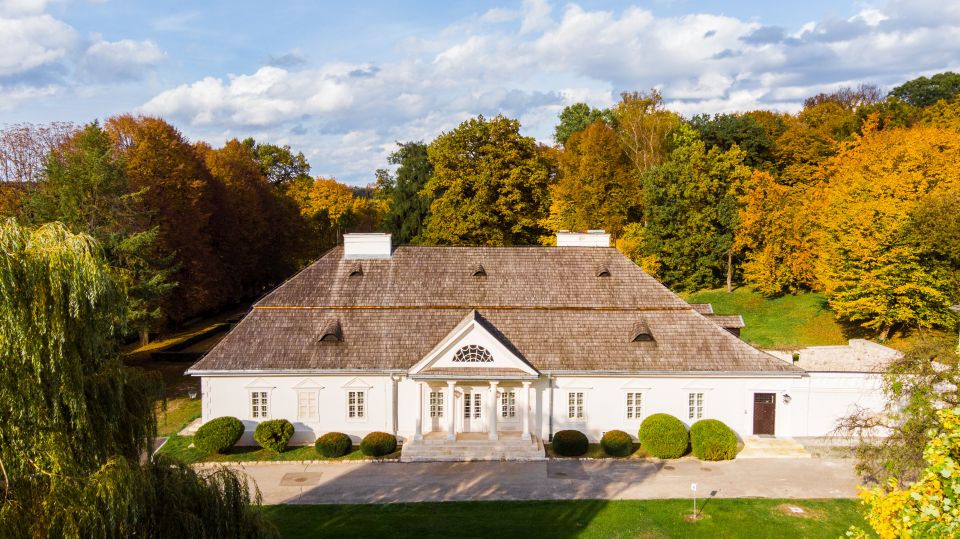
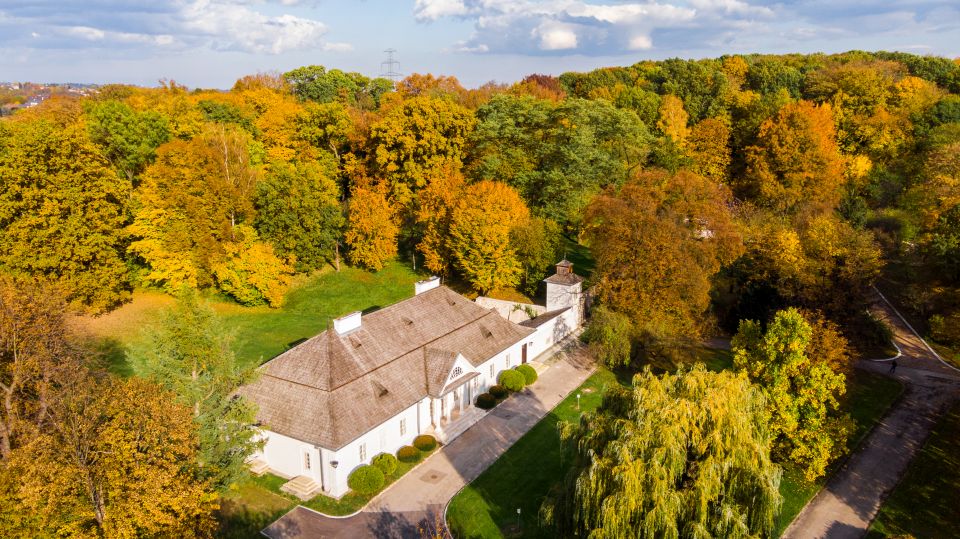
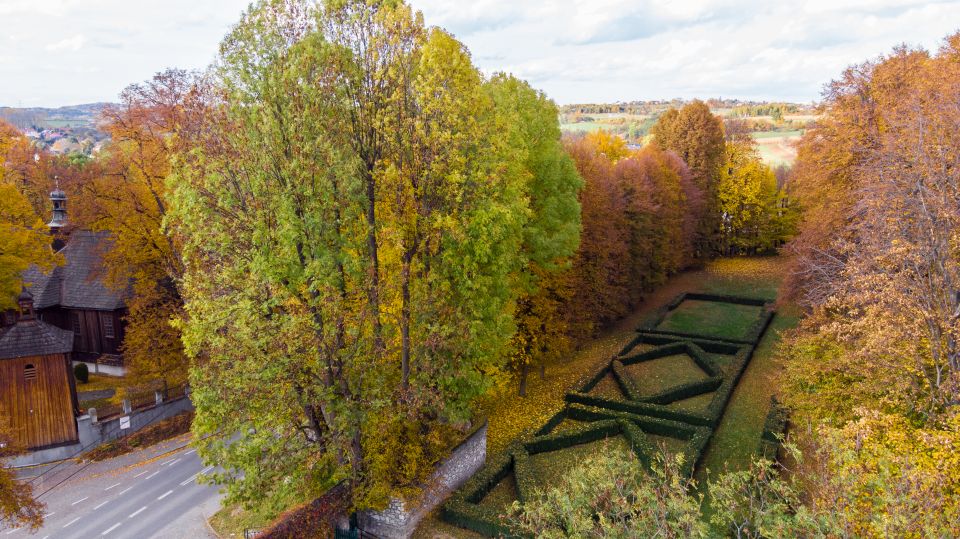
Modlnica’s convenient location on the border of the two Polish partitions greatly contributed to its development in the 19th century. This is proven by the records of three inns operating in the village, where numerous travellers made stops during their journeys. The Konopka family house became the meeting point for many notable artists and scholars, such as Artur Grottger, Walery Eliasz-Radzikowski, Antoni Kozakiewicz, and, most prominently, Polish ethnographer Oskar Kolberg, who lived in Modlnica in the years 1871–1884. During the interbellum, painter Stanisław Kamocki also lived there, creating many sketches and paintings of the manor house.
The oldest mentions of the manor house in Modlnica were found in the inventory made in 1582, when it belonged to Mikołaj Salomon. It was a large, two-storeyed wooden building placed on a brick foundation, which in addition to being a place of residence also served as a defensive position.
It is not known what happened to that building. The next description of the manor house from 1752 mentions a much smaller structure, probably built on the foundations of the last one.
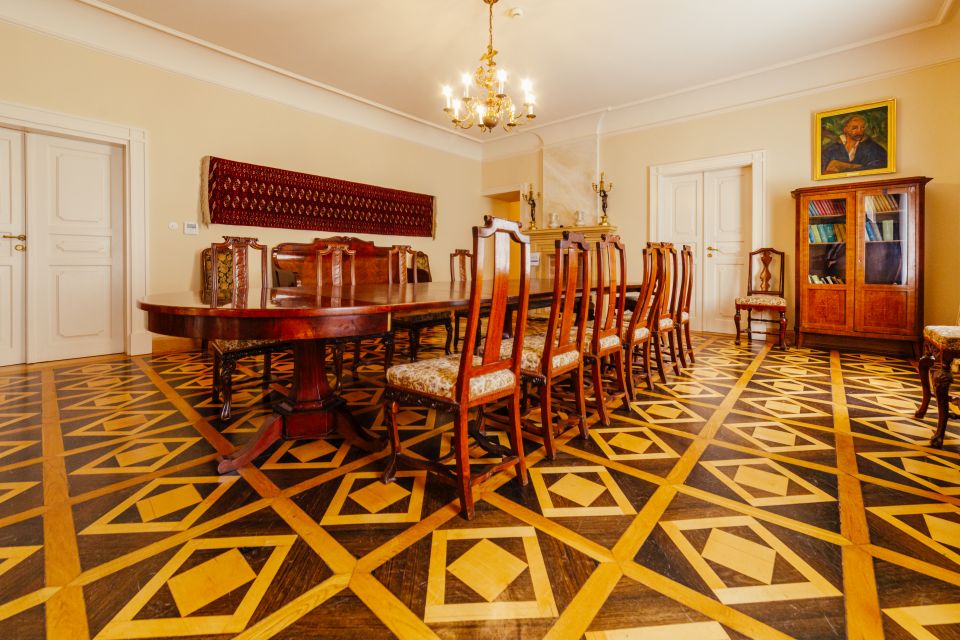
The existing manor house was erected in the place of the previous one by Józef Konopka in 1784–1787 (the architect was Karol Kriszkier). The 19th-century renovation work gave the building its classicist appearance with a four-column portico and a traditional mansard roof.
The middle part of the façade (looking from the garden) was decorated with a six-column recessed portico, typical of Polish gentry manor houses from the first half of the 19th century, bearing similarities to both the Royal Baths Park in Warsaw and traditional arcaded housing. Of interest is also a small arcaded courtyard as well as square turret on the manor’s eastern side.
From the northern and eastern side, the manor house is surrounded by a large park which drops westwards by way of four terraces, dating back to the 16th century. Later, in the 18th and 19th century, the garden was rearranged several times. Today, its main distinguishing feature is the partially preserved old stand of trees. The farm buildings near the eastern side of the manor, in particular a 1794 wooden granary, have unfortunately not been preserved. However, a brick storage building renovated in the 1960s, has been preserved in its entirety and now houses guest rooms.
W okresie powojennym dwór uległ zniszczeniu i dewastacji. Przekazany 1959 roku – upamiętnia to tablica wmurowana w fasadę – Uniwersytetowi Jagiellońskiemu, został w latach 1960-64, z okazji jubileuszu 600-lecia Uczelni, starannie odnowiony z zachowaniem wszystkich cech minionej epoki. Uniwersytet kosztem znacznych nakładów finansowych zadbał również o modernizację instalacji technicznych, wprowadzając w 1985 roku ekologiczne ogrzewanie gazowe oraz budując nowe doprowadzenie wody.
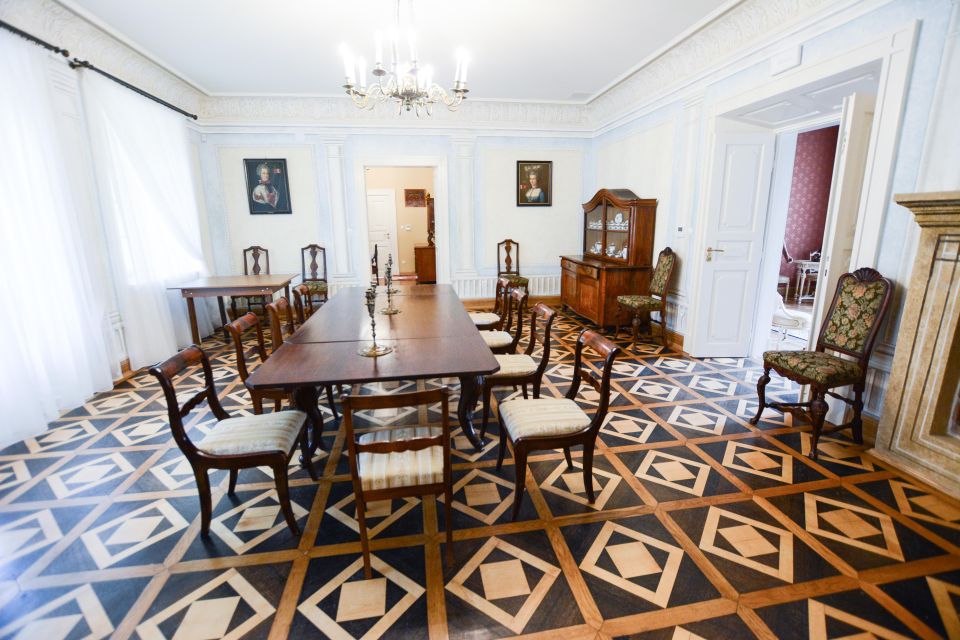
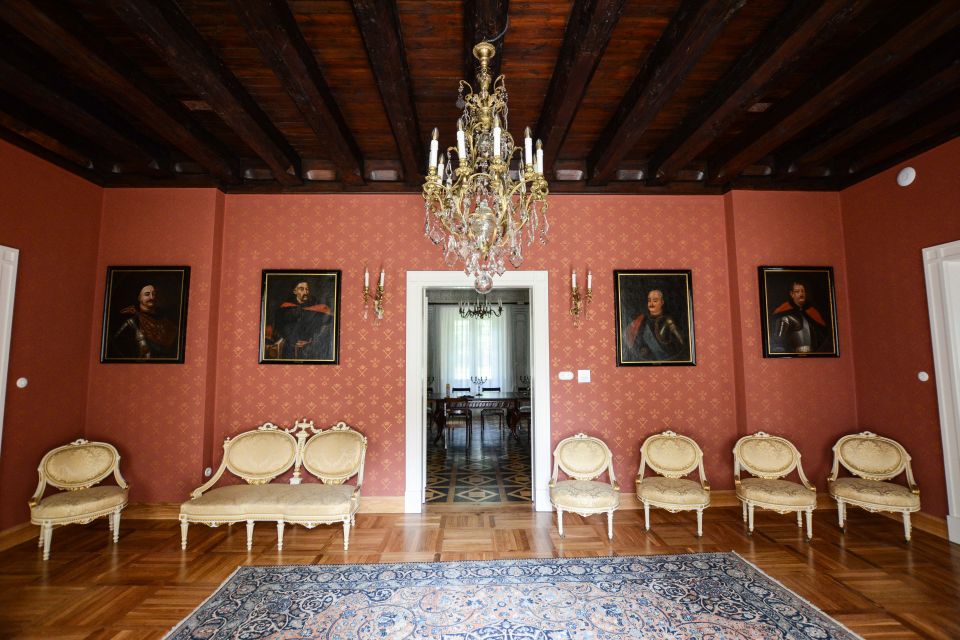
The furnishing of the manor house has not been preserved. In 1947, the building still featured faceted ceilings, classicist floors in several rooms as well as elements of window and door woodwork in the same style. The only trace of the former furnishing of the manor are three fireplaces.
Ekspozycja i obecny wystrój dworu prezentują typowe urządzenie dworu szlacheckiego z XVIII i XIX wieku. Całość uzupełniona jest kolekcją malarstwa w duchu sarmatyzmu (XVII-XVIII w.) i pracami Jerzego Fedkowicza (1891-1939). Na uwagę zasługuje między innymi salonik myśliwski ze zbiorem łowieckich trofeów i kolekcją pochodzących z XVIII wieku grafik o tematyce myśliwskiej, ofiarowanymi Muzeum UJ przez Adama Kopkę, ostatniego właściciela majątku.
From the 1960s, the manor house in Modlnica has first served as accommodation for the University staff during work retreats, and then as a branch of the JU Museum. In 1995, it became the JU rector’s Conference and Reception Centre, functioning within the framework of the Centre for Research and Science Events. Currently, it is used for commercial purposes as a venue for various events, meetings and conferences, while preserving the historic character of the interior and collections of items displayed within.
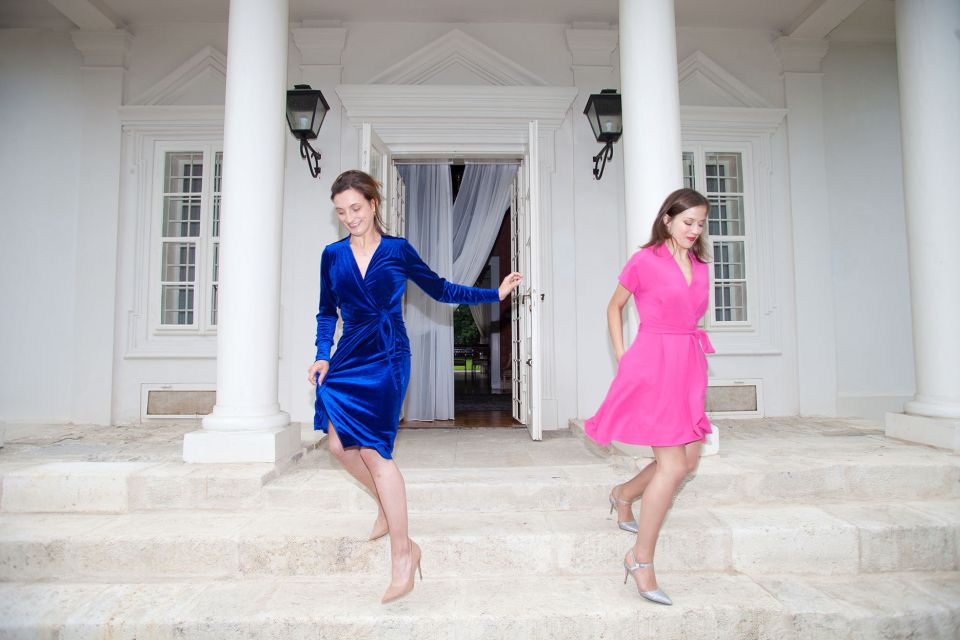
Jagiellonian University in Kraków :: 2024
